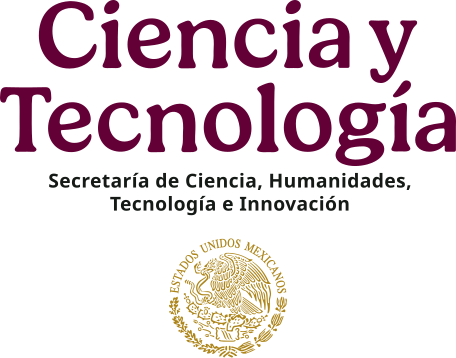The Impact of Labor Migration on Human Capital Development
DOI:
https://doi.org/10.33679/rmi.v1i1.2190Palabras clave:
labor migration, human capital, development, migration policies, Europe.Resumen
The growing role of labor migration is one of the most notable trends in international migration flows. This migration has become an important factor in economic development and a source of the increasing interdependence of countries and regions in today’s globalized world. It impacts migrants’ country of origin as well as the destination country, chiefly affecting human capital in both groups of nations. This article systematizes the positive and negative effects of labor migration focusing on human capital while suggesting a system of indicators characterizing such effects. Special attention is paid to the analysis of policies related to such migration. This study explains how countries of origin and destination must carry out effective and fair management of labor migration to make the most of its benefits at an international level.
Referencias
Adler, S. (1977). International migration and dependence. Westmead, ENG: Saxon House.
Aleshkovskii, I. A., Grebenyuk, A. A., Kravets, V. A., & Maksimova, A. S. (2019). Foreign Migrants in the Russian Labor Market: Assessment of the Total Number and Contribution to Russia’s GDP. Economic and Social Changes: Facts, Trends, Forecasts, 12(6), 197-208.
Artal-Tur, A., Peri, G., & Requena-Silvente, F. (Eds.). (2014). The Socio-Economic Impact of Migration Flows. Cham, CH: Springer International Publishing.
Becker, G. (1962). Investment in Human Capital: A Theoretical Analysis. Journal of Political Economy, 70(5 Part 2), 9-49.
Bodvarsson, Ö. B., & Hou, J. W. (2010). The Effects of Aging on Migration in a Transition Economy: The Case of China (Discussion Paper No. 5070). Retrieved from http://ftp.iza.org/dp5070.pdf
Bourdieu, P. (2002). Forms of capital. Economic Sociology, 3(5), 60-74.
Calenda, D. (Ed.). (2016). Case studies in the international recruitment of nurses: promising practices in recruitment among agencies in the United Kingdom, India, and the Philippines. Bangkok, TH: International Labour Organization. Retrieved from https://www.ilo.org/wcmsp5/groups/public/---asia/---ro-bangkok/documents/publication/wcms_459869.pdf
Carling, J. (1996). International Labour Migration: Consequences for Countries of Origin. (Occasional Paper No. 21). Retrieved from https://www.academia.edu/2961115/International_labour_migration_Consequences_for_countries_of_origin
Cervantes, M., & Guellec, D. (2002). The brain drain: Old myths, new realities. OECD Observer, 230 (1), 40-42. Retrieved from https://www.oecd-ilibrary.org/economics/oecd-observer/volume-2002/issue-1_observer-v2002-1-en
Chiswick, B. (1978). The Effect of Americanization on the Earnings of Foreign-born Men. The Journal of Political Economy, 86(5), 897-921.
Chiswick, B. R., & Miller, P. W. (2014). International Migration and the Economics of language (IZA Discussion Papers No. 7880). Retrieved from https://www.econstor.eu/bitstream/10419/90104/1/dp7880.pdf
Coleman, J. (2001). Social and Human Capital. Social Sciences and Contemporary World, 3,122-139.
Denison, E. (1968). Contribution of Knowledge to Economic Growth: An Inter-Country Analysis. Moscow, RU: Progress.
Dinkelman, T., & Mariotti, M. (2014). What are the Long Run Effects of Labor Migration on Human Capital? Evidence from Malawi (NBER Working Paper Series No. 22049). Retrieved from https://www.parisschoolofeconomics.eu/docs/ydepot/semin/texte1314/WHA2014TAR.pdf
Dustmann, C., & Kirchkamp, O. (2002). The Optimal Migration Duration and Activity Choice After Re-migration. Journal of Development Economics, 67(2), 351-372.
Edwards, A. C, & Ureta, M. (2003). International Migration, Remittances, and Schooling: Evidence from El Salvador. Journal of Development Economics, 72(2), 429-461.
Federal State Statistics Service (Rosstat). (2019). Labor and employment in Russia. Moscow: Rosstat. Retrieved from https://rosstat.gov.ru/storage/mediabank/Trud_2019.pdf
Glazev, S. U., & Lvov, D. S. (1985). Theoretical and applied aspects of scientific and technological progress management. Economics and mathematical methods, (1), 793- 804.
Granovetter, M. (1985). Economic Action and Social Structure: The Problem of Embeddedness. American Journal of Sociology, 91(3), 481-510. Retrieved from https://www.jstor.org/stable/2780199?seq=1
Grebenyuk, A. (2017). Labour migration and economic development: consequence and system of indicators. Moscow, RU: Creative Economy.
Hildebrandt, N., & McKenzie, D. (2005). The Effects of Migration on Child Health in Mexico. (World Bank Policy Research Paper No. 3573). https://doi.org/10.1596/1813-9450-3573
International Organization for Migration (IOM). (2003). Migration in a Globalized World. Geneva, CH: Author. Retrieved from https://www.iom.int/migration-globalized-world-2003
Jasso, G., & Rosenzweig, M. (1982). Estimating the Emigration Rates of Legal Immigrants Using Administrative and Survey Data: The 1971 Cohort of Immigrants to the United States. Demography, 19 (3), 279-290.
Kahn, K., Collison, M., Tollman, S., Wolff, B., Garenne, M., & Clark, S. (2003, June 4-7). Health Consequences of Migration: Evidence from South Africa’s Rural Northeast (Agincourt). Paper presented at the Conference on African Migration in Comparative Perspective (pp. 1-26). Johannesburg, SA.
Kirdar, M. (2007). Labor Market Outcomes, Capital Accumulation and Return Migration: Evidence from Immigrants in Germany. Retrieved from http://mpra.ub.unimuenchen.de/2028
Klugman, J. (2009). Human Development Report 2009. Overcoming Barriers: Human Mobility and Development. UNDP-HDRO Human Development Reports. Retrieved from http://hdr.undp.org/sites/default/files/reports/269/hdr_2009_en_complete.pdf
Kolosnitsyna, M., & Suvorova, I. (2005). International Labor Migration: Theoretical Bases and Policy of Regulation. Economic Journal,(4), 548-553.
Kommersant. (2017, August 12). A migrant from nature. Who is going to work in Russia now. Author. Retrieved from https://www.kommersant.ru/doc/3380376
Migration Advisory Committee. (2020). Review of the Shortage Occupation List 2020. Retrieved from https://assets.publishing.service.gov.uk/government/uploads/system/ uploads/attachment_data/file/927352/SOL_2020_Report_Final.pdf
Olimova, S. (2010). The Impact of Labour Migration on Human Capital: The Case of Tajikistan. Revue européenne des migrations internationales, 26(3), 181-197.
Popescu, C., Diaconu, L., & Maxim, A. (2014). The Impact of Migration on Human Capital and Economic Development. The Proceedings of the International Conference Communication, Context, Interdisciplinary, 3, 32-41.
Rothgang, M., & Schmidt, C. (2003). The New Economy, the Impact of Immigration, and the Brain Drain. Amsterdam, NL: Elsevier Science.
Ryazantsev, S. V., & Grebenyuk, A. A. (2008). Potential of the return migration to Russia from the CIS and Baltic countries. Population, 2(40), 104-112.
Schultz, T. W. (1961). Investment in Human Capital. The American Economic Review, 51(1), 1-17.
Schultz, T. W. (1981). Investing in People: the Economics of Population Quality. Berkeley, CA: University of California Press.
Schwab, K. (2016). Die Vierte Industrielle Revolution. World Economic Forum. Munich, GER: Pantheon Verlag.
Sjaastad, L. (1962). The Costs and Returns of Human Migration. Journal of Political Economy, 70(5 Part 2), 80-93.
Statistisches Bundesamt. (2019). Population [Data file]. Retrieved from https://www.destatis.de/EN/Themes/Society-Environment/Population/_node.html
Strovsky, L., & Jiang, J. (2008). Role of Overseas Chinese in China’s economic development. Bulletin USTU-UPI. Series: Economics and Management, 2, 64-72.
Taran, P., Ivakhnyuk, I., Pereira Ramos, M. d. C., & Tanner, A. (2009). Economic migration, social cohesion and development: Towards an integrated approach. Strasbourg, FR: Council of Europe Publishing.
United Nations (UN). (2013). International Migration Policies: Government Views and Priorities. New York, NY: Author. Retrieved from https://www.un.org/en/development/desa/population/publications/pdf/policy/InternationalMigrationPolicies2013/Report% 20PDFs/z_International%20Migration%20Policies%20Full%20Report.pdf
United Nations (UN). (2017). International Migration Report 2017. Highlights. New York, NY: Author. Retrieved from https://www.un.org/development/desa/publications/international-migration-report-2017.html
Vargas-Silva, C., & Fernández-Reino, M. (2019). Migrants and Housing in the UK: Experiences and Impacts (Migration Observatory Briefing). United Kingdom: University of Oxford. Retrieved from https://migrationobservatory.ox.ac.uk/wp-content/uploads/2016/04/Briefing-Migrants-and-Housing-in-the-UK-Experiences-and-Impacts.pdf
World Bank. (2018). Migration and Remittances: Recent Developments and Outlook. Retrieved from https://openknowledge.worldbank.org/handle/10986/30280
Yang, D. (2008). International migration, Human Capital and Entrepreneurship: Evidence from Philippine Migrant’s Exchange Rate Shocks. The Economic Journal, 118 (528), 591-630.
Yormirzoyev, M., & Mittelhammer, R. (2015). Migration, Remittances and Economic Growth: An Empirical Study in the case of Former Soviet Republics. Proceedings of the XVI April International Academic Conference. Moscow.
Zagulyaev, D. G. (2010). The Concept of regulation of the international labor market of employees. Bulletin of SUSU, (7), 4-10.
Descargas
Publicado
Número
Sección
Licencia
Derechos de autor 2021 Migraciones Internacionales

Esta obra está bajo una licencia internacional Creative Commons Atribución-NoComercial-SinDerivadas 4.0.
Las/los autoras/es que publiquen en esta revista aceptan las siguientes condiciones:
- Las/los autoras/es conservan los derechos de autor y ceden a la revista Migraciones Internacionales (RMI) el derecho de la primera publicación, mediante el registro de los textos con la licencia de Creative Commons Atribución-No comercial-Sin derivar 4.0 internacional (CC BY-NC-ND 4.0), que permite a terceros utilizar lo publicado siempre que mencionen la autoría del trabajo y a la primera publicación en esta revista.
- Autorizan que su artículo y todos los materiales incluidos en él sean reproducidos, publicados, traducidos, comunicados y transmitidos públicamente en cualquier forma o medio; así como efectuar su distribución al público en el número de ejemplares que se requieran y su comunicación pública, en cada una de sus modalidades, incluida su puesta a disposición del público a través de medios electrónicos o de cualquier otra tecnología, para fines exclusivamente científicos, culturales, de difusión y sin fines comerciales.
- Los autores/as pueden realizar otros acuerdos contractuales independientes y adicionales para la distribución no exclusiva de la versión del artículo publicado en esta revista (por ejemplo: incluirlo en un repositorio institucional, página web personal; o bien publicarlo en un libro) siempre que sea sin fines comerciales e indiquen claramente que el trabajo se publicó por primera vez en Migraciones Internacionales (RMI), [agregando la ficha bibliográfica correspondiente: Autor/es. (año). Título del artículo. Migraciones Internacionales, volumen (número), pp. doi: xxxx ].
Para ello, las/los autoras/es deben remitir el formato de carta-cesión de la propiedad de los derechos de la primera publicación debidamente llenado y firmado. Este documento debe cargarse en formato PDF en archivos complementarios dentro de la plataforma OJS.
Este obra está bajo una licencia de Creative Commons Atribución-No comercial-Sin derivar 4.0 internacional (CC BY-NC-ND 4.0)..












